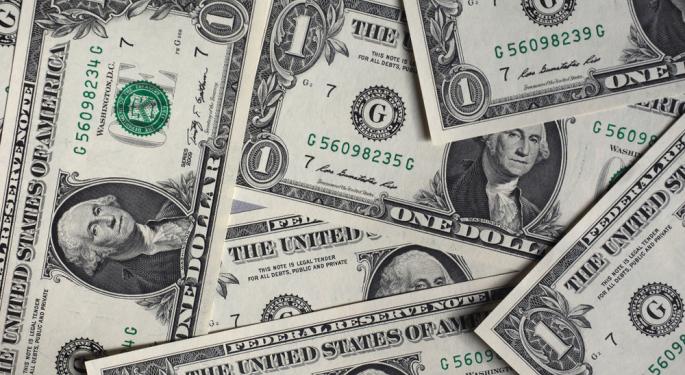Buying Emerging Markets as the Dollar Weakens? Let Us Explain
The U.S. Dollar Index is down about 8% this year through Tuesday, unwinding a chunk of last year's gains as traders brace for Federal Reserve rate cuts and wrestle with shifting White House trade policy.
Currency weakness is doing what it typically does—pushing capital toward overseas markets that tend to benefit when the greenback loses altitude.
Nowhere is the tailwind clearer than in emerging economies. Local-currency equities in countries like India, Brazil and Indonesia have climbed as the dollar retreated, while bond spreads have narrowed as debt-servicing costs decline for governments and companies that borrow in dollars.
Don't Miss:
- Build your portfolio with ETFs — track the S&P 500, tech, energy, and more. Here's where to invest with no commissions and no account minimums.
- Make your savings work harder with a high-yield cash account with 4.1% APY, with no fees, no minimum balance requirements, and unlimited withdrawals.
Commodity-heavy exporters are getting an additional lift because dollar-denominated raw materials—from copper to crude—tend to rise when the dollar falls.
Three Channels of Support
Capital Flows. A softer dollar often sparks search-for-yield behavior as U.S. assets look less compelling in currency-adjusted terms. Exchange-traded funds that track the MSCI Emerging Markets Index have seen fresh inflows this quarter as investors rotate away from dollar-heavy benchmarks.
Debt Relief. Many emerging-market sovereigns and corporates issue bonds in dollars. When the greenback weakens, the local-currency cost of servicing that debt drops, easing default risk and compressing credit spreads. That helps dollar-denominated bond prices in places like Mexico and South Africa.
Commodity Pricing. Because most globally traded commodities are quoted in dollars, a cheaper dollar lifts spot prices in nominal terms. Higher export revenues can feed back into stronger fiscal positions for resource-rich nations.
What the Past Tells Us
The last sustained dollar down-cycle, from 2004 to 2011, coincided with emerging-market equities outpacing developed-market peers by a wide margin. During that stretch, emerging sovereign-bond spreads over Treasurys tightened sharply as growth accelerated and balance sheets improved.
Some see room for the pattern to repeat. By one inflation-adjusted measure—the real effective exchange rate—the dollar is still near peaks last seen in the mid-1980s. If it keeps drifting lower, historical relationships suggest emerging assets could keep outperforming.
How Investors Are Positioning
Broad-based ETFs. Vehicles including the Vanguard FTSE Emerging Markets ETF or iShares J.P. Morgan USD Emerging Markets Bond ETF offer one-ticket exposure to dozens of countries, spreading out single-country risk while capturing currency upside.
Country or sector funds. For investors with a view on specific themes—India's digitalization drive, Brazil's agricultural exports or Taiwan's semiconductor dominance—single-country ETFs or regional ADR baskets provide a more targeted approach.
International bond funds. Falling yields at home are pushing income seekers toward local-currency emerging-market debt funds, which can offer coupons north of 6%—with the added kicker of potential currency appreciation if the dollar slips further.
Michael Unger of Coral Gables Trust said that dollar weakness can be especially powerful for U.S. multinationals that book a large share of sales abroad, as foreign revenues translate into more dollars per unit sold. Martin Schulz at Federated Hermes said improving global liquidity and pro-growth policy in China could extend the rebound in emerging stocks.
Tariff volatility and geopolitical flashpoints are the wild cards here. A sudden policy shift—or a surprise Fed turn—could stabilize the dollar and blunt the trade. Still, with U.S. assets accounting for nearly 60% of major global equity indexes, even a modest allocation to emerging markets can diversify both growth drivers and currency exposure.
For investors willing to withstand higher day-to-day swings, a weaker dollar provides a rare window to buy into faster-growing economies at favorable exchange rates—and potentially lock in returns that look even better once they're translated back into dollars.
Browse Next:
- Open an IRA with Robinhood and get up to a 3% match on deposits — just like a 401(k), but without the employer. Start investing now, commission-free.
- Have $200,000 or more in investable assets? Get a free consultation with a financial advisor to learn about retirement and tax-saving strategies.
Image: Shutterstock
Posted-In: BZ-REALESTATE ETF accessETFs



